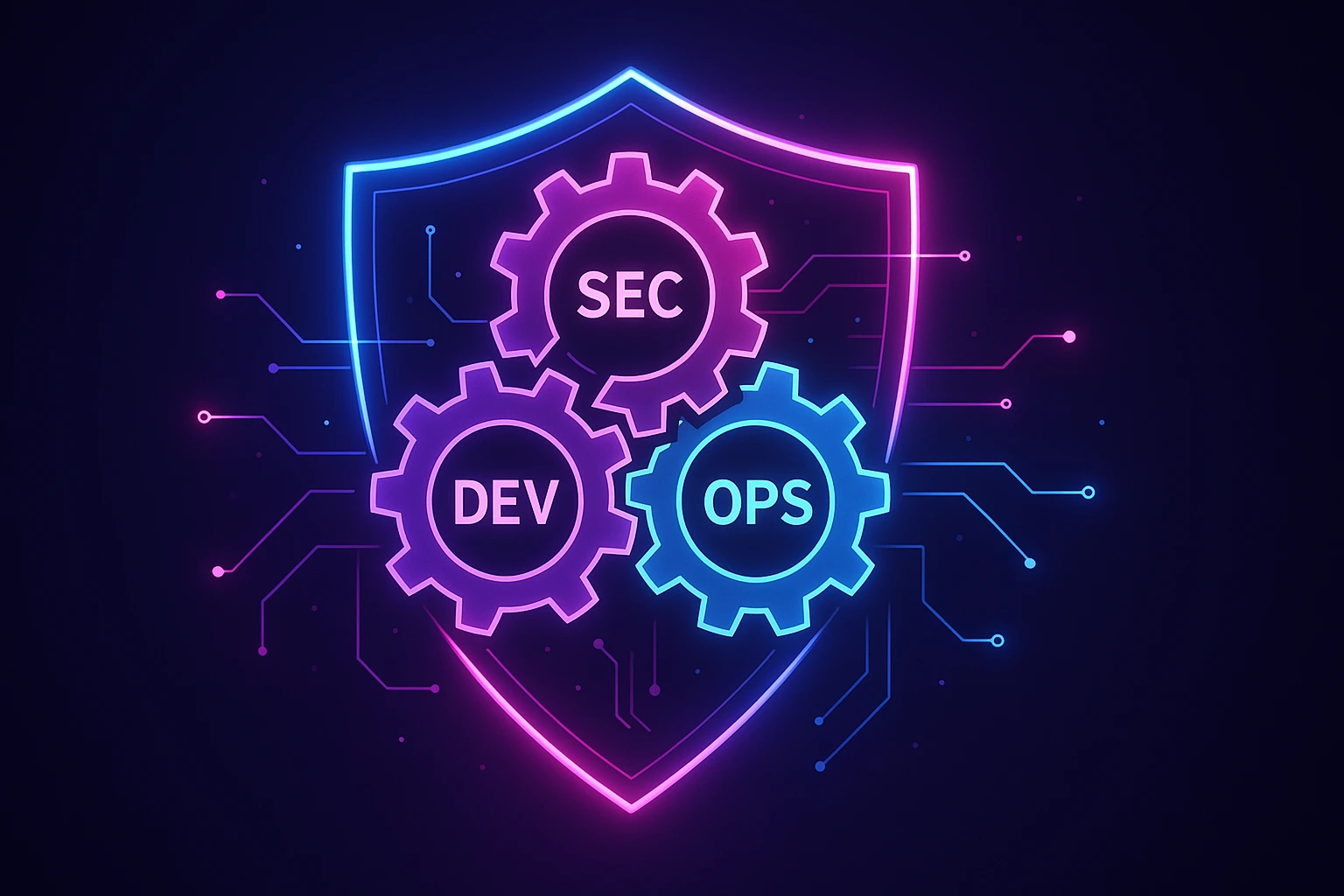Data loss in organizations is becoming increasingly prevalent and damaging. In 2024 alone, a staggering 67% of organizations have reported an increase in cyber and data incidents. The financial impact of data breaches further exacerbates the situation. Globally, the average cost of a data breach hovers around $4.44 million, while in the United States, this figure escalates to $10.22 million. This highlights not only the economic burden of these incidents but also the disparity in costs due to varying compliance requirements and breach containment expenses across regions.
A robust data backup strategy is essential for safeguarding business continuity and enhancing security. Effective backup practices provide a protective shield that supports operational resilience by preventing data loss and shortening recovery times. The following three strategies form the foundation of enterprise-level data protection: implementing resilient backup architecture, securing backup data against threats, and ensuring reliable recovery capabilities through testing and automation.
1. Implement Resilient Backup Architecture
Effective backup architecture protects against both accidental data loss and targeted attacks. Modern threats specifically target backup repositories, making architectural resilience essential for business continuity.
Deploy the 3-2-1-1 Framework
Ransomware now targets backup repositories first, with a majority of companies experiencing attacks that put their critical data at risk. The traditional 3-2-1 guidance, created before widespread internet connectivity, no longer offers sufficient protection. The modern 3-2-1-1 framework closes those gaps by adding immutability to the mix.
This enhanced framework requires maintaining these four components:
- 3 separate copies of every dataset
- 2 different storage media
- 1 copy kept off-site
- 1 additional copy that is immutable or physically air-gapped
Multiple media types and geographic locations remove single points of failure. Immutable or air-gapped storage blocks attackers from altering, encrypting, or deleting every backup at once, even if they compromise administrative credentials. When an incident occurs, you can restore from the untouched copy and avoid paying ransom or enduring prolonged downtime.
Cloud adoption introduces new variables in this architecture. Many teams keep production data in one cloud, daily snapshots in another, and monthly immutable archives in a third region. This multi-cloud strategy prevents vendor lock-in while satisfying data-residency rules.
Plan Recovery Requirements
Your backup schedule must align with business tolerance for data loss and downtime. Recovery Point Objective (RPO) indicates the maximum data you can afford to lose, while Recovery Time Objective (RTO) captures the maximum period systems can stay down before revenue or safety suffers.
Calculating business-specific RPO requirements involves analyzing revenue impact, operational dependencies, and regulatory mandates. E-commerce platforms processing high hourly revenue cannot afford the same four-hour RPO as internal HR systems. Financial trading systems require sub-second RPOs due to market volatility, while manufacturing systems balance production disruption costs against backup infrastructure investment.
The relationship between backup frequency and storage costs follows predictable patterns. More frequent backups generate higher storage consumption due to change overlap, while continuous replication substantially increases storage requirements but eliminates batch processing windows. Organizations often implement tiered strategies: real-time replication for tier-1 systems, hourly incrementals for tier-2 applications, and daily fulls for archival data.
Different industries require different backup frequencies:
- Hourly Backups or Real-time Replication for mission-critical data such as financial systems or e-commerce data
- Daily Backups for operational data such as CRMs and customer service systems
- Weekly or Monthly Backups for archive data including marketing assets and historical records
Seasonal adjustments matter for many organizations. Retail systems need tighter RPOs during peak shopping periods, healthcare systems require enhanced backup during flu seasons, and financial systems need additional protection during tax seasons. These cyclical requirements often justify variable backup policies that automatically adjust protection levels based on business calendars.
Tighter RPOs depend on incremental backups that capture only changed data blocks, reducing backup windows while enabling point-in-time recovery. This approach balances protection requirements with storage efficiency. Block-level incrementals substantially reduce backup windows compared to full backups while maintaining complete recovery capabilities.
2. Secure Backup Data Against Threats
Attackers specifically target backup repositories because they contain complete datasets. Modern ransomware and advanced persistent threats have evolved to seek out and compromise backup infrastructure as their primary objective. Comprehensive security controls protect backup data even when production systems are compromised.
Implement End-to-End Encryption
Your backup data needs strong encryption both when stored and during transfer. Use AES-256 encryption, which balances security with speed on modern systems. Store your encryption keys separately using secure hardware modules or cloud key vaults to prevent unauthorized access.
When creating encryption keys from passwords, you'll need to balance security with system performance. Different methods offer varying protection levels:
- PBKDF2 - Standard protection suitable for most businesses, with moderate resource usage
- scrypt - Stronger protection against specialized hacking hardware, but slower performance
- Argon2 - Highest protection level, but requires the most processing power
- FIPS 140-2 Level 3 - Required for financial institutions, uses physical hardware that destroys keys if tampered with
Encryption can slow down your backups, especially with large data volumes. Modern processors with built-in encryption support minimize this impact, while software-only encryption can significantly extend backup times. Many organizations handling nightly backups of large datasets use dedicated encryption hardware or their cloud provider's built-in encryption to maintain performance.
Every backup transfer needs secure connections using TLS 1.2 or newer protocols, whether moving data to another data center or cloud storage. Older TLS versions have known vulnerabilities that attackers can exploit to intercept your data mid-transfer, and many compliance standards now explicitly require TLS 1.2 as the minimum. This prevents data interception during transfer. While TLS 1.3 offers better speed and security, it requires more careful setup and testing across your backup systems. Not all backup software, storage systems, and network devices support TLS 1.3 yet, and incompatible components can break your entire backup chain. You'll need to verify that every piece of your backup infrastructure can communicate using the same TLS version before upgrading.
Establish Immutable Storage
Store at least one backup copy on write-once-read-many media or cloud repositories with object lock features. Immutable storage prevents attackers from encrypting or deleting backup data, even when administrative credentials are compromised.
When implementing immutable storage, you have two primary options: physical media like tape libraries or cloud-based immutability features. The choice between tape libraries and cloud immutability involves distinct trade-offs.
Tape provides true physical isolation and long-term cost efficiency for large datasets, with modern Linear Tape-Open 8 (LTO-8) technology offering substantial capacity and extended data retention.
However, tape requires significant upfront investment and longer recovery initiation times. Cloud object lock eliminates hardware management overhead and provides instant access, but creates dependency on provider security controls and internet connectivity.
Cloud immutability implementations vary substantially across providers. Amazon Web Services (AWS) S3 Object Lock supports legal holds and retention periods but requires bucket versioning, potentially increasing storage costs. Microsoft Azure Blob immutable storage offers policy-based protection with lower overhead but limited cross-region replication options. Google Cloud retention policies provide granular control but require careful Identity and Access Management (IAM) configuration to prevent administrative bypass.
Regardless of whether you choose tape or cloud immutability, both approaches depend on strong encryption key management to maintain data security. Key management requires regular rotation schedules, role-based access controls, and multi-factor authentication for any key operations. These controls prevent lateral movement and limit attacker access to backup repositories. Enterprise key rotation should follow documented schedules for data encryption keys and key-encrypting keys, with regulated industries often requiring shorter intervals.
Address Industry-Specific Compliance Requirements
Backup systems must meet regulatory requirements that apply to your business, which vary widely across industry verticals and geographic regions.
Financial Services Compliance
The Sarbanes-Oxley Act (SOX) requires public companies to maintain financial records with strong internal controls, including immutable audit trails of all backup and restore activities. Section 302 and Section 404 specifically mandate documented backup procedures and quarterly testing validation.
Financial institutions must also address Gramm-Leach-Bliley Act requirements for customer data protection, requiring encrypted backups with customer-managed keys and geographic restrictions on data storage.
Healthcare Regulations
The Health Insurance Portability and Accountability Act (HIPAA) requires covered entities to implement contingency planning for electronic protected health information (PHI), including documented backup and recovery procedures with regular testing. The Security Rule mandates encryption for backup data containing PHI, while the Privacy Rule requires tracking of all data access and restoration activities.
State-level regulations like California's Confidentiality of Medical Information Act (CMIA) often impose additional requirements for breach notification and data residency.
European Data Protection
The General Data Protection Regulation (GDPR) Article 32 requires appropriate technical measures for data protection, including backup systems that support data portability and deletion rights. Organizations must implement privacy by design in backup architectures, often requiring field-level encryption and granular restoration capabilities.
The right to erasure creates complex requirements for backup retention policies, particularly for immutable storage systems.
Cross-Border Considerations
Data sovereignty regulations also create geographic constraints on backup storage locations. For example, Russian data localization laws require citizen data to remain within national borders, while Chinese Cybersecurity Law mandates local storage for critical information infrastructure operators.
These requirements often force multi-regional backup architectures with complex routing and retention policies. Compliance costs represent a significant portion of total backup infrastructure spending when properly implemented.
The following section addresses comprehensive testing strategies that validate these architectural and security foundations, ensuring backup systems perform reliably when restoration becomes critical.
3. Validate Reliable Recovery Through Testing and Automation
Backup systems only provide value when they restore data successfully. Regular testing and automated monitoring prove backup integrity while reducing recovery time during actual incidents.
Automate Recovery Testing
Establish weekly test restores in isolated environments using automated workflows. These tests should restore recent backups, verify data integrity through checksum validation, and measure restoration times. Checksum verification computes hashes during backup creation and rechecks them during test restores, revealing data corruption before it affects production systems.
Comprehensive testing scenarios must address different failure modes beyond simple restore validation.
- Database corruption testing verifies point-in-time recovery accuracy by comparing restored data against known checkpoints.
- Ransomware simulation validates immutable storage effectiveness by attempting to encrypt test environments post-restoration.
- Geographic disaster scenarios test cross-region recovery capabilities and network bandwidth limitations during large-scale restoration events.
Recovery testing metrics should track multiple dimensions of backup effectiveness.
- Mean Time to Recovery (MTTR) measures how quickly systems return to operational status, with acceptable timeframes varying significantly between critical applications and secondary systems.
- Recovery Point Accuracy measures data consistency between backup and restore points, with acceptable variance requirements differing substantially across application types and industries.
Automated testing workflows should integrate with incident response procedures and business continuity planning. Organizations often discover that technical recovery represents only a portion of total business resumption time so test scenarios need to validate business process resumption as well, including:
- User access restoration
- Application dependency sequencing
- Downstream system synchronization
Monitor restoration performance over time to maintain RTO as data volumes grow. This historical data helps predict recovery windows and plan for capacity requirements. Storage performance can degrade over time as data volumes increase, requiring periodic infrastructure scaling to maintain recovery SLAs.
Deploy Comprehensive Monitoring and Analytics
Backup failures often go unnoticed until you need the data most. Without real-time monitoring, organizations discover corrupted backups, missed schedules, or storage capacity issues only during recovery attempts. This section outlines how to implement proactive monitoring that prevents backup gaps and ensures reliable protection.
Establish Real-Time Backup Health Monitoring
Your backup system needs continuous oversight to catch problems before they compound. Modern backup monitoring should integrate with your existing enterprise monitoring and Security Information and Event Management (SIEM) platforms, since failed backups often signal broader infrastructure issues affecting multiple systems.
Essential monitoring metrics include:
- Backup job success and failure rates
- Completion times and performance trends
- Data transfer volumes and throughput
- Resource utilization during backup windows
- Storage capacity consumption patterns
Plan for Storage Capacity Growth
Storage exhaustion causes backup failures without warning. Effective capacity planning requires understanding how your data grows and changes over time, since different applications show distinct growth characteristics.
Key capacity planning considerations:
- Data growth patterns: Recent data typically achieves lower compression ratios while historical data compresses more efficiently
- Deduplication effectiveness: Varies significantly by data type, with virtualized environments seeing substantial ratios but encrypted databases showing lower effectiveness
- Archive tier migration: Track how data moves between storage tiers to optimize costs
Review storage consumption monthly to project capacity requirements six to twelve months ahead. Advanced analytics should track compression efficiency, deduplication rates, and archive migration patterns to prevent cost surprises.
Monitor Backup Performance and Network Impact
Backup windows expand over time due to data growth, eventually requiring infrastructure scaling or strategy adjustments. Performance monitoring helps you identify issues before they affect business operations.
Performance baselines to establish:
- Backup throughput: Modern systems should achieve high percentages of theoretical network capacity during off-peak hours
- Network utilization: Keep backup traffic below recommended thresholds to prevent production application impact
- Storage IOPS consumption: Monitor Input/Output Operations Per Second to identify bottlenecks
- Completion time trends: Track how backup windows change over time
Significant deviations from these baselines indicate infrastructure issues or configuration problems that need immediate attention. Regular analysis helps you optimize backup windows and prevent performance degradation that could compromise protection levels.
Maintain Comprehensive Documentation and Integrate with Incident Response Plans
Document backup procedures, recovery processes, and escalation contacts. During crisis situations, clear documentation reduces recovery time and prevents mistakes that compound data loss incidents. Include network diagrams, access credentials, and step-by-step recovery procedures that non-specialist staff can follow.
Backup documentation should integrate with broader incident response procedures and business continuity planning. Recovery runbooks must include decision trees for different incident types, with specific procedures for ransomware attacks, natural disasters, and system failures. Each scenario requires different recovery priorities and resource allocation strategies.
Effective documentation includes recovery time estimates for different data volumes and restoration scenarios. Small databases typically require several hours for complete restoration, while large-scale systems may require extended timeframes depending on storage performance and network bandwidth. These estimates must account for both data transfer time and application startup procedures.
Documentation should address common failure modes and their remediation steps. Backup corruption can affect backup sets, requiring secondary backup validation procedures. Network failures during restoration events can corrupt partial restores, mandating restart procedures and integrity validation. Dependency management becomes critical during multi-system recovery, requiring documented startup sequences and integration testing procedures.
Regular tabletop exercises validate documentation accuracy and staff readiness. These exercises should simulate realistic failure scenarios, including communication challenges and resource constraints. Organizations often discover that documented procedures require additional time beyond estimates due to real-world complications and coordination overhead.
Quarterly documentation updates maintain procedure accuracy as infrastructure changes. Review and update documentation after significant system modifications, vendor changes, or organizational restructuring. Documentation drift represents one of the most common causes of extended recovery times during actual incidents.
Implementing Enterprise Backup Best Practices
The window for protecting your data is closing. Every day without proper backup practices increases your exposure to an incident that could cost millions and devastate your business. Consider this: if ransomware struck your systems tonight, would you confidently recover by morning? Would you know exactly which backup to trust, how long recovery would take, and whether your data would be intact?
Most organizations can't answer these questions with certainty. They discover gaps in their backup strategy only when disaster strikes—finding corrupted backups, expired retention policies, or untested recovery procedures that fail under pressure. By then, they're negotiating with attackers, explaining delays to customers, or worse, closing their doors permanently.
The three practices outlined here—resilient architecture, comprehensive security, and validated recovery—aren't just recommendations. They're the minimum requirements for survival in today's threat landscape. Every week you delay implementation extends your vulnerability window. Meanwhile, attackers are actively scanning for organizations with weak backup defenses, knowing these make the easiest and most profitable targets.
Enterprise-grade solutions like Flosum Backup & Archive eliminate the complexity of implementing these practices from scratch. Rather than spending months building and testing backup infrastructure, you can deploy proven protection that's already helped hundreds of organizations survive ransomware attacks, data corruption incidents, and compliance audits. The platform delivers immediate 3-2-1-1 architecture compliance, military-grade encryption, and automated recovery validation—turning months of implementation into days.
Don't wait for an incident to reveal the gaps in your backup strategy. Request a demo with Flosum today to see exactly how your organization can achieve bulletproof data protection before it's too late.
Thank you for subscribing









